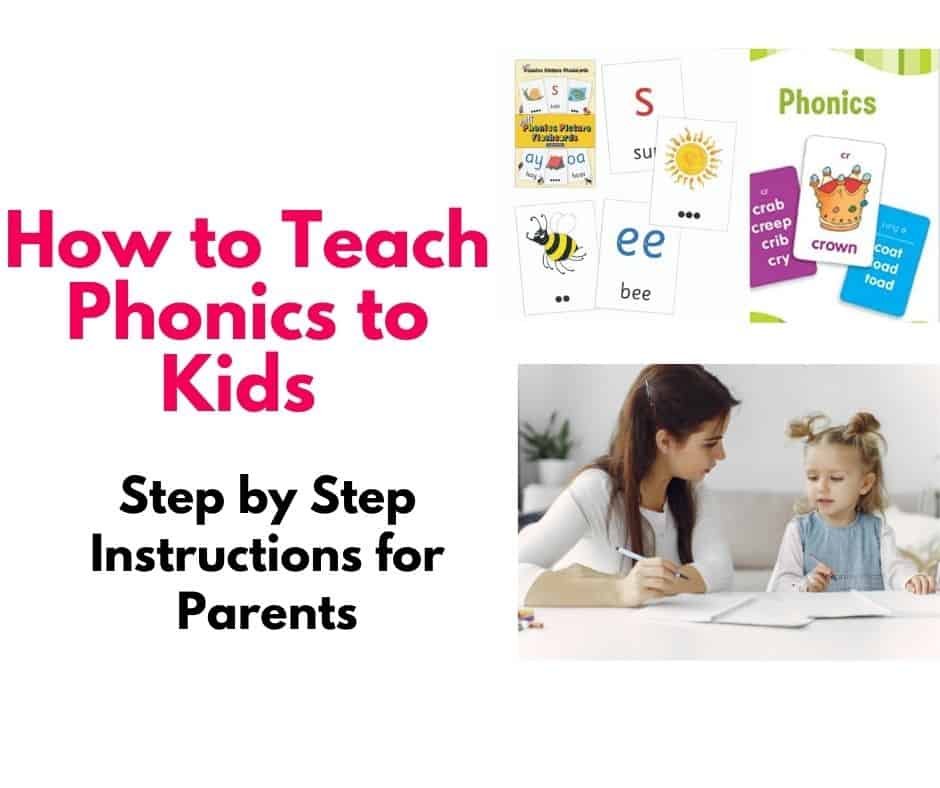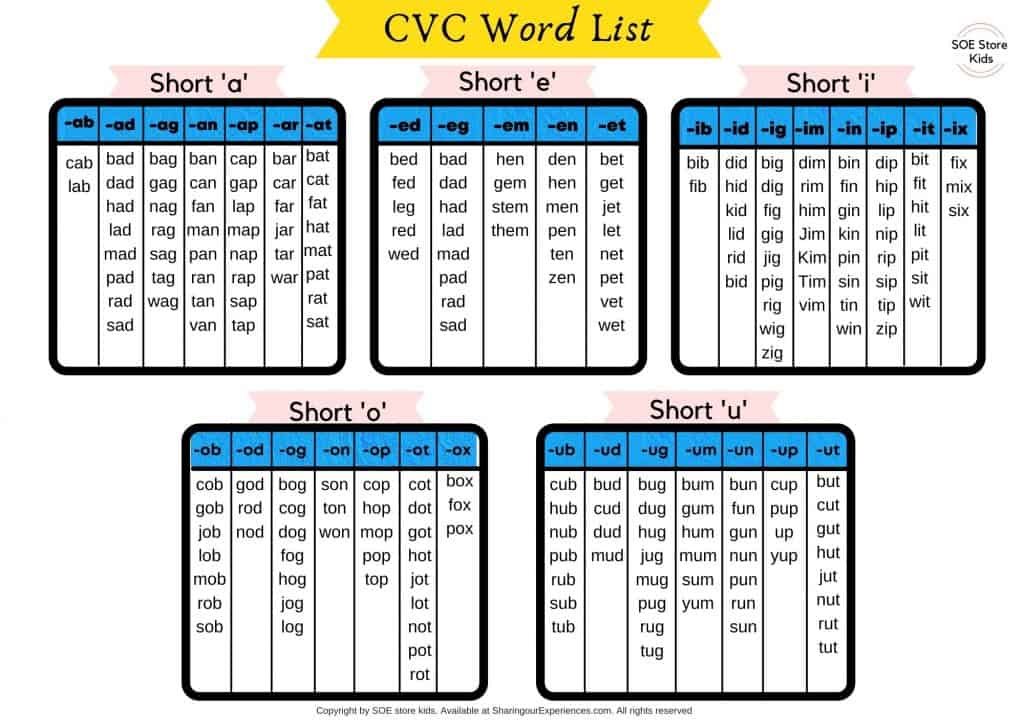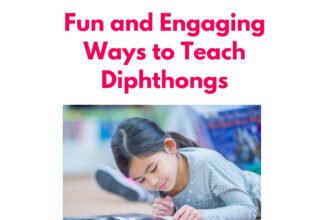
Wondering how to teach phonics to kids? Here I will try to cover frequently asked questions around phonics, step by step instructions on how to teach phonics to kids when to get started, and an easy roadmap you can follow. You will also find phonics resources (books, activity books and pdf printables) that you can use for teaching your kids
When we were growing up – we did not have phonics and as a result there is a lot of ignorance about phonics in general.
Here I would try to answer most frequently asked questions around phonics so that it becomes easier for everyone to be able to teach phonics to your child.
TRENDING>>>>>> Check out this post on TEACHING NUMBERS TO TODDLERS
Unlock the key to reading success with our step-by-step guide on How to Teach Phonics to Kids! As a parent, you can give your child a head start with easy-to-follow instructions and tips.
Download our digital phonics worksheets now and watch them thrive in their reading journey.
What is Phonics?
Phonics is a way or method of learning how to read and write by the study of sounds. It involves teaching sounds made by via letter-sound relationships.
So English uses letters in the Alphabet to represent sounds. In Phonics kids are taught sounds that each letter or group of letter makes and thus this information helps kids learn how to read.
So phonics helps kids with sound based rules that helps them to read and write easily.
For example – children will learn the sound of letter m a t which they will sound out as /mmmm/ /aa/ /t/) and then will be able to blend the sounds together to read word mat. Or if they hear mat they would be able to decode the sounds to understand how to write the word ‘mat’.
Why is Phonics important?
Phonics help kids learn how to read and write by using letter sound knowledge. This skill helps our kids to read or write unfamiliar words as well.
If we teach our kids 10 words by rote learning they would still know only 10 words. But if we teach them the sounds of 10 letters they can read many more words with those letters of the alphabet.
Thus in Jolly phonics the first sounds taught are s,a,t,i,p,n. As with only these sounds they can read and write many words like sat, tin, pin, tip, sit, and so on.
This knowledge gives the confidence.
Thus Phonics helps kids to use skill and strategy to decode new words. Phonics provides a foundation to make reading easier.
When is Phonics taught?
Children are ready to start phonics around 3 to 4 years of age.
Also please wait for your kids school to start phonics to avoid confusing the child. As different schools may follow different methods of teaching.
Another important thing is – Do not rush your kids to start with phonics and if you are teaching yourself learn from an accredited teacher (who is accredited to teach others) . It is difficult for a child to unlearn so wait for your school to start or learn the rules and the teach.
Avoid buying kits as most of them are not based completely on jolly phonics and may confuse your kid more.
In general below is the sequence followed:
- Preschool – Kids are taught the Capital letter ABC
- In Nursery, kids are taught small alphabet letter sounds and letter formation (writing). Simple sight words are also introduced
- In Kindergarten – kids are taught CVC word families and more sight words
- And then more advanced concepts and rules are taught in first grade and beyond.
Types of Phonics
- Synthetic Phonics
- Analogy Phonics
- Analytic Phonics
- Embedded Phonics
How to teach Phonics to kids
The Alphabet is a great place to start teaching phonics. Though the order in which letter and sounds are taught may be different from a b c .
Also the number of letters in the Alphabet are different from number of sounds taught in phonics. In phonics we have 42 sounds. Because in some cases two letters may make a single sound for example th, sh and so on. These are referred to as Digraphs (2 letter and 1 sound).
So to simplify start with simple letter sounds ( 1 letter and 1 sound). For each letter we introduce letter name, sound, action, story and letter formation.
How to teach letter sounds to kids
Introduce each letter sound with fun action, stories and songs.
Also one frequently asked question is should I teach writing along with letter sounds?
When you are introducing each letter – also introduce letter formation to kids
So each day you can introduce one letter – by its story, action, its sound and how to write it. Start writing in air and the practice it on any page or worksheets. You can also do tracing for each letter on salt trays or create them using playdough or trace them on sandpaper letters like these.
Kidken Sand Paper Letter tracing Cursive | Montessori Sandpaper Cursive | Wooden...
- Sandpaper Letters Cursive is in the lower case(Cursive) with the sandpaper consonants pasted on pink boards and vowels on blue boards. Each board has a space on the left for the child to keep it sturdy with one hand while tracing with the other.. Contains 26 Wooden cards with sandpaper cutout pasted on the right side of each card. Vowels are painted in Blue and Consonants are painted in Pink color. These are packed and delivered in a Corrugated Box for easy storage.
- Sandpaper Letters Cursive is in the lower case(Cursive) with the sandpaper consonants pasted on pink boards and vowels on blue boards. Each board has a space on the left for the child to keep it sturdy with one hand while tracing with the other.. Contains 26 Wooden cards with sandpaper cutout pasted on the right side of each card. Vowels are painted in Blue and Consonants are painted in Pink color. These are packed and delivered in a Corrugated Box for easy storage.
- English alphabet Cursive case can be easily taught to the child using these sandpaper boards. Each alphabet is cut precisely and pasted on a MDF Board.
- The child has to trace each letter the way it is written, while tracing he has to make the phonetic sound of the letter. By doing this the impression of each letter is stored in their subconscious mind along with the sound through their muscular memory. The child will never forget the sounds in future and he develops good handwriting.
- First comes phonetically correct sound making with letter identification, reading the alphabets, forming words and then comes finally the writing. We follow the scientific way for manufacturing all our educational products so that the child learn the concept with ease and build his solid future on his own.
- This product teaches the first part of your language quest, suggest to go with Alphabet cutouts for the next stage of learning of word formation. And of course we use child friendly raw materials for a safe play for your child and pass the toy to other child after your child outgrows the educational toy to give room to other toys from our range.
In Jolly Phonics the alphabet sounds are taught in a particular sequence as below

How to teach jolly phonics step by step
1. Start by teaching the basic sounds of the English language. This includes the letters of the alphabet and their corresponding sounds. You can use flashcards or other visual aids to help your child learn the sounds.
2. Once your child has mastered the basic sounds, you can begin teaching them how to blend those sounds together to form words. A good way to do this is to start with simple three letter words. Have your child say the sounds of each letter in the word, then blend them together to say the word as a whole.
3. As your child becomes more proficient at blending sounds together, you can start teaching them more advanced concepts, such as consonant blends, digraphs (two letters that make one sound) and trigraphs (three letters that make one sound).
4. Finally, you can begin teaching your child how to read and write simple sentences. Start with short, simple sentences and gradually increase the length and complexity as your child progresses.
With these tips, you can start teaching your child Jolly Phonics step by step. With practice and patience, your child will be reading and writing in no time!
Letter sounds worksheets for kids
You can start with downloading these letter sounds phonics worksheets for kids. They cover alphabet sounds activities
Also you can get these downloadable phonics flashcards for kids They cover objects starting with each letter
Once your child is able to identify sounds you can get these missing letter sounds worksheets
Jolly phonics worksheets for kids
You can also buy Jolly phonics pupil and teachers books from amazon. I have listed them below
Jolly Phonics Pupil Book 1 (JL8677)
- Phonics-Based Learning: Jolly Phonics is a systematic phonics program that teaches children to read and write using synthetic phonics.
- Multi-Sensory Approach: It employs a multi-sensory approach, incorporating actions, songs, and stories to engage children in learning phonics sounds.
- Phonics-Based Learning: Jolly Phonics is a systematic phonics program that teaches children to read and write using synthetic phonics.
- Multi-Sensory Approach: It employs a multi-sensory approach, incorporating actions, songs, and stories to engage children in learning phonics sounds.
- Structured Progression: The program introduces phonics sounds in a specific order, starting with the easiest and most frequently used sounds in the English language.
- Workbook and Activity Books: There are accompanying workbooks and activity books that provide exercises and activities to practice phonics skills learned.
- Integration with Reading and Writing: It integrates learning phonics with reading and writing, helping children apply their phonics knowledge to reading and spelling words.
- Global Use: Widely used in schools around the world as a foundational tool in teaching literacy skills.
Jolly Phonics Pupil Book 2 (colour edition) in print letters NEW EDITION:...
- A fresh new look in terms of cover and page designs.
- Easier navigation in a variety of ways, including color-coding and contents.
- Enhanced transparency in the structure for the corresponding content in The Phonics Handbook
- A fresh new look in terms of cover and page designs.
- Easier navigation in a variety of ways, including color-coding and contents.
- Enhanced transparency in the structure for the corresponding content in The Phonics Handbook
- Alignment of content across the materials for consistency of teaching.
- Comes with step-by-step lesson plans and comprehensive support, provided in the Jolly Phonics Teacher's Book.
Jolly Phonics Pupil Book 3: in Precursive Letters (British English edition)
Once you have taught letter sounds to your child. Practice them regularly via different activities and worksheets.
Ask your child to hear and identify beginning sounds and ending sounds in words.
Phonics key skills — common terms used
Apart from alphabet sounds you would also need to teach below skills
Teach Blending
Blending is the ability to say sounds together to form words.
Teach Segmenting
Segmenting is the ability to break down words into individual sounds
Teach Tricky words or sight words
Tricky words or sight words do not follow the rules of phonics. So a kid has to learn them as they are. For example a child should be able see the and understand it is the word ‘the’.

How to teach phonics step by step
- Letter sounds and identification: Children learn the sound of each letter of the alphabet.
- CVC (Consonant-Vowel-Consonant) words: Children learn how to blend the sounds of each letter in a CVC word, such as “cat” or “dog.”
- Sight words: These are words that are frequently used and cannot be sounded out phonetically, such as “the,” “and,” and “it.”
- Consonant blends: Children learn how to blend two or three consonants together, such as “bl” in “blue” or “str” in “street.”
- Digraphs: Children learn about digraphs, which are two letters that make a single sound, such as “sh” in “shop” or “ch” in “chair.”
- Long vowel sounds: Children learn the different ways that vowels can make a long sound, such as “a” in “cake” or “e” in “sheep.”
- Magic e or Silent E rule or the Bossy E rule: The Magic E rule states that when a vowel is followed by a consonant and an “e,” the vowel will say its name (long sound) and the “e” at the end of the word is silent. For example, “cap” becomes “cape” and “tap” becomes “tape.”
- Diphthongs: Children learn about diphthongs, which are two vowels that make a single sound, such as “oi” in “oil” or “ou” in “out.”
- Longer CCVC and CVCC words. CCVC words are usually introduced after CVC words and blends, as they involve a consonant cluster at the beginning of the word. Examples of CCVC words are “spot,” “grab,” and “frog.” CVCC words, on the other hand, are introduced after CCVC words, as they involve a consonant cluster at the end of the word. Examples of CVCC words are “wind,” “bend,” and “help.”
- R-controlled vowels: Children learn about vowels that are influenced by the letter “r,” such as “ar” in “car” or “ir” in “bird.” R-controlled vowels are vowels that are followed by the letter “r”, and the “r” changes the sound of the vowel. For example, in the word “car”, the “a” is an r-controlled vowel because the “r” following it changes its sound.
- Silent letters: Children learn about silent letters, such as the “k” in “knee” or the “h” in “hour.” As students become more advanced, they can learn about other silent letters such as the “b” in “doubt” and the “w” in “answer”. It is important to note that silent letters are not always completely silent and can sometimes influence the pronunciation of the word.
- Learn alternative spelling
- Learn special rules
In addition to the rules and concepts mentioned earlier, here are some other important rules in phonics:
- Schwa sound: The schwa sound is a short, unstressed vowel sound that is often heard in English words. It is represented by the letter “e” in unstressed syllables, such as the first syllable in “sofa” or the second syllable in “common.”
- Soft and hard “c” and “g”: The letters “c” and “g” can have two sounds each. When followed by an “e,” “i,” or “y,” they make their soft sounds (as in “cent” or “gym”). When followed by an “a,” “o,” “u,” or a consonant, they make their hard sounds (as in “cat” or “go”).
- Doubling consonants: When a one-syllable word ends with a consonant, and the vowel sound is short, the final consonant is usually doubled before adding a suffix that begins with a vowel. For example, the word “hop” becomes “hopped” when adding the suffix “-ed.”
- Accent and stress: English words have different stresses and accents, and understanding them is important for pronunciation and reading. Generally, words with more than one syllable have one syllable that is stressed more than the others, such as the first syllable in “happy” or the second syllable in “banana.”
- Homophones: Homophones are words that sound the same but have different meanings and spellings, such as “write” and “right,” “to,” “too,” and “two,” or “there,” “their,” and “they’re.” Learning homophones is important for understanding context and meaning in reading and writing.
- Contractions: Contractions are shortened forms of two words combined into one, such as “don’t” for “do not” or “can’t” for “cannot.” Knowing contractions is important for reading and writing more natural-sounding English.
- Prefixes and suffixes: Prefixes are added to the beginning of a word to change its meaning, while suffixes are added to the end of a word to change its form or meaning. Understanding prefixes and suffixes is important for building vocabulary and understanding complex words.
What are CVC words?
CVC words are 3 letter words that begin with a consonant, have a single letter short vowel sounds and then another consonant.
Example cat, mat, sad, pen, sun, pit, dog,
Also Read – CVC Word List: Improve Your Reading and Writing Skills with These Essential Words

Read Next
How to teach CVC words to kids
CVC words worksheets pdf for kids
You can download these CVC clip cards to practice beginning sounds. If you want to learn family wise
If you would like to get a complete CVC pack go for this HUGE CVC bundle. You will not need individual worksheets then. Just download print and keep practicing.

If you would like to get the worksheets based on each CVC word family here is the list:
Short a CVC word family PDF worksheets
“ab” word family Phonics worksheets for kids | Sharing Our Experiences
CVC “ad” word family printable Phonics worksheets for kids | Sharing Our Experiences
“ag” word family Phonics worksheets for kids | Sharing Our Experiences
“am” word family Phonics worksheets for kids | Sharing Our Experiences
an word family worksheets pdf – Kindergarten kids (sharingourexperiences.com)
“ap” word family Phonics worksheets for kids | Sharing Our Experiences
“at” word family phonics worksheets pdf downloadable | Sharing Our Experiences
CVC “ay” word family printable Phonics worksheets for kids | Sharing Our Experiences
Short e CVC word family PDF worksheets
“ed” word family Phonics worksheets for kids | Sharing Our Experiences
CVC “eg” word family printable Phonics worksheets for kids | Sharing Our Experiences
CVC “em” word family printable Phonics worksheets for kids | Sharing Our Experiences
CVC “en” word family printable Phonics worksheets for kids | Sharing Our Experiences
“et” word family Phonics worksheets for kids | Sharing Our Experiences
Short i CVC word family PDF worksheets
CVC “ib” word family printable Phonics worksheets for kids | Sharing Our Experiences
CVC “id” word family printable Phonics worksheets for kids | Sharing Our Experiences
CVC “ig” word family printable Phonics worksheets for kids | Sharing Our Experiences
CVC ‘im’ word family printable Phonics worksheets for kindergarten | Sharing Our Experiences
CVC “in” word family printable Phonics worksheets for kindergarten | Sharing Our Experiences
CVC “ip” word family printable Phonics worksheets for kids | Sharing Our Experiences
CVC “it” word family printable Phonics worksheets for kids | Sharing Our Experiences
CVC “ix” word family printable Phonics worksheets for kids | Sharing Our Experiences
Short o CVC word family PDF worksheets
CVC “ob” word family printable Phonics worksheets for kids | Sharing Our Experiences
CVC ‘od’ word family printable Phonics worksheets for kids | Sharing Our Experiences
CVC “og” word family printable Phonics worksheets for kids | Sharing Our Experiences
CVC “op” word family printable Phonics worksheets for kids | Sharing Our Experiences
CVC “ot” word family printable Phonics worksheets for kids | Sharing Our Experiences
CVC “ox” word family printable Phonics worksheets for kids | Sharing Our Experiences
Short u CVC word family PDF worksheets
CVC “ub” word family printable Phonics worksheets for kids | Sharing Our Experiences
CVC “ug” word family printable Phonics worksheets for kids | Sharing Our Experiences
CVC “um” word family printable Phonics worksheets for kids | Sharing Our Experiences
CVC “un” word family printable Phonics worksheets for kids | Sharing Our Experiences
CVC “up” word family printable Phonics worksheets for kids | Sharing Our Experiences
CVC “ut” word family printable Phonics worksheets for kids | Sharing Our Experiences
For covering overall word families this downloadable CVC puzzle pack is good
you may also like these CVC word family clip cards Beginning sounds | Sharing Our Experiences
What are Sight words
Sight words are words that do not follow any rule of phonics and young children are encouraged to memorize them as whole. For example – could, am, one, yellow etc.
These are also referred to as tricky words.
Being able to recognize and read Sight words is one of the key skills needed to help your chill learn to read fluently.
Jolly Phonics sight words list
You can download the Jolly phonics tricky words list from below link. Jolly phonics is a way of teaching phonics to kids and they have divided the sight words into 4 levels.
Download your Jolly Phonics Tricky words list from here https://www.jollylearning.co.uk/resource-bank/handy-tricky-word-list/
How to teach Sight words to kids
If you have any further questions feel free to ask me in comments would love to hear from you
Sight words worksheets for kids
You can get these worksheets for practicing two letter sight words and here are some more downloadable sight words worksheets for kids
What are consonant blends?
Consonant blends are a combination of two or three consonant sounds that are blended together in a word without losing their individual identities. These sounds are typically next to each other in a word and can be heard distinctly when pronounced. Common examples of consonant blends include “bl” in “blue”, “st” in “star”, and “gr” in “green”. Learning to recognize and use consonant blends is an important part of developing strong reading and writing skills.
Also Read – Top Strategies for Teaching Consonant Blends to Kids: A Comprehensive Guide
What are Digraphs
A digraph is set of 2 letters that make one sound. They can be made of vowels or consonants.
Example – sh, th, ch
Also Read – Fun and Easy Ways to Teach Digraphs to Kids:. Discover the Secret Code of Sounds
Digraphs worksheets pdf
If you are looking for pdf packs containing fun interactive activities and worksheets for teaching digraphs you can get from below links
Digraph ‘ch’ words worksheets for Kindergarten & First grade 1 | Sharing Our Experiences
Digraph ‘ng’ words worksheets for Kindergarten & First grade 1 | Sharing Our Experiences
Digraph ‘wh/ph’ words worksheets for Kindergarten & First grade 1 | Sharing Our Experiences
Digraph ‘sh’ words worksheets for Kindergarten & First grade 1 | Sharing Our Experiences
What are short and long vowel sounds
Short vowel sound for letter a can be heard in words like apple, ant and anchor.
Long vowel sound for letter a can be heard in words like angel, airplane.
In long vowel – the sound of letter a is same as letter name a.
Similarly we have different short and long sounds for all vowels.
What are Diphthongs
A diphthong is a combination of two vowel sounds within the same syllable. When spoken, the sound of a diphthong glides or slides from one vowel sound to another. Examples of diphthongs include “oi” in “boil,” “ou” in “house,” and “ow” in “grow.” Diphthongs are unique because they involve a combination of two vowel sounds that create a new, distinct sound.
Also Read – Dive into the World of Diphthongs: Fun and Engaging Ways to Teach Your Kids
In conclusion, teaching phonics to kids is a critical step in developing their reading and writing skills. By using a systematic approach, parents can help their children learn the fundamental phonics concepts in a fun and engaging way. By learning to recognize letter sounds, digraphs, diphthongs, and other phonics rules, children can become confident readers and writers. Investing in a comprehensive phonics teaching course can benefit parents by providing them with the knowledge and tools needed to help their children develop their literacy skills. Remember, with the right guidance and approach, teaching phonics to kids can be a rewarding and enjoyable experience for both parents and children.


 Amazon.in
Amazon.in 













